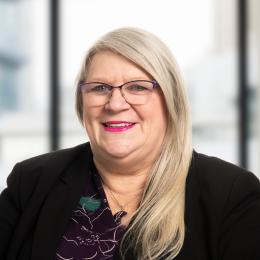In recent years, the increased scrutiny of R&D software claims has been the focus point of the enquiry level with HMRC. The Chief Digital Information Office (CDIO) assist caseworkers in assessing the claims and ensuring the correct information is reported. The response is that many claims submitted as R&D showing an advance in science, especially technology, are not R&D claims.
It does not meet the criteria of the HMRC BEIS guidelines for these reasons:
- Claims are processed for software that has already deduced technology.
- The perception is that every development in software is R&D and is easily a routine functionality produced by a competent professional in the field.
- The company is doing this commercially and not improving the industry knowledge base.
Marketing, business analytics, economics of scale and advertising media do not qualify as methodology to advance in science and technology, unless these methods improve the existing knowledge base for the industry.
So, determining what qualifies for software development is the key question. This is arguably one of the most misunderstood qualifying claiming criteria in R&D. The fast-moving software industry and the innovative processes that are available online and being developed are key to qualifying the R&D. Competent Professionals seeking to advance technology need to keep abreast of the current developments in AI, machine learning and development techniques available on the public domain. An accurate baseline and starting point must be clear in qualifying the advance and technological difficulties.
How software can qualify
There are two ways in which software can qualify:
- The software is created or adapted specifically for a larger R&D project.
- Software development is the project's end goal.
It is not relevant whether the software developed is used in-house, licensed or sold.
However, some critical criteria to follow are:
- The advance must be non-trivial and acknowledged by a competent professional. The competent professional must explain HOW the project is an appreciable improvement relative to what is already available in the public domain.
- The already existing baseline technology must be clearly defined to attain a clear understanding of the advances achieved.
- Customisation of existing software can qualify if the modifications show a clear scientific and technical improvement to the existing technology.
- Configuring existing software to the company’s requirements where the capability within the software already existed is UNLIKELY to be considered a qualifying R&D project. It needs to extend its capability and produce an improvement to the industry.
- The routine adaptation of software products is not usually R&D. Combining the technologies, using the interface to integration platforms, can be R&D if a competent professional cannot readily deduce the separate systems. This would include the complex creation and working of algorithms to enhance a software program and produce a new result, enhancing the outputs. Clearly defined outcome for an advance in technology and development.
- Attention as to HOW the technological uncertainty is addressed through input information. The focus should not be on a commercial front to measure the outputs. An example would be the assembly of components to establish the process would not qualify as R&D. The new development of the components would be considered R&D.
- Planning and testing can qualify for the R&D, provided the projects qualify for an advance and can ascertain whether the activities and tasks have resolved the uncertainties. The testing of functionality of the output or design would not qualify.
Examples
Here are some examples of software projects:
- Creating new search engines using materially new search methods.
- Develop new operating systems or languages.
- Resolving conflicts within hardware and software where the existing technology does not meet the requirements and extends the knowledge base or where no solution has been documented.
- Creating new algorithms or updating existing ones using new techniques to improve software performance.
- Developing new encryption or security techniques
- Integration of software into a single platform, tools to enhance the functionality of software programs and new methods to capture and analyse data.
- Develop software to automate business processes and robotics process automation in areas that have never been tried.
- The development of software infrastructure to address the problems of geography, cartography, and geoscience.
- The creation of the fundamental software architecture of a software system.
- The graphics and visualisation, creating and processing the information of images and 3D models.
- The development of microservices, designing highly scalable, flexible software applications by decomposing an existing software application into discrete services that implement specific business functions built, deployed, and scaled independently.
- The development of computer visionary software which can gain a high-level understanding from images and videos.
- The result of augmented reality renders digital images or data onto real-world objects.
- The development of artificial intelligence in building intelligent machines capable of performing tasks that typically require human intelligence and reasoning.
In a fast world of technology, it is hard to keep abreast of the changes that are innovative and groundbreaking events in the computer science world. Therefore, this article is not limited to these changing events that need to be considered as an R&D project for claiming against the tax relief systems. Being innovative and recognised for the achievements is part of the reason for the development of Computer Science and is at a fast pace.
We are keen to hear all about your developments in science and technology and visit you onsite to explore the claimable possibilities of your relief.
The next step
For more information, please contact Simon Denye on s.denye@uhy-manchester.com, or Susan Parker on s.parker@uhy-manchester.com.




